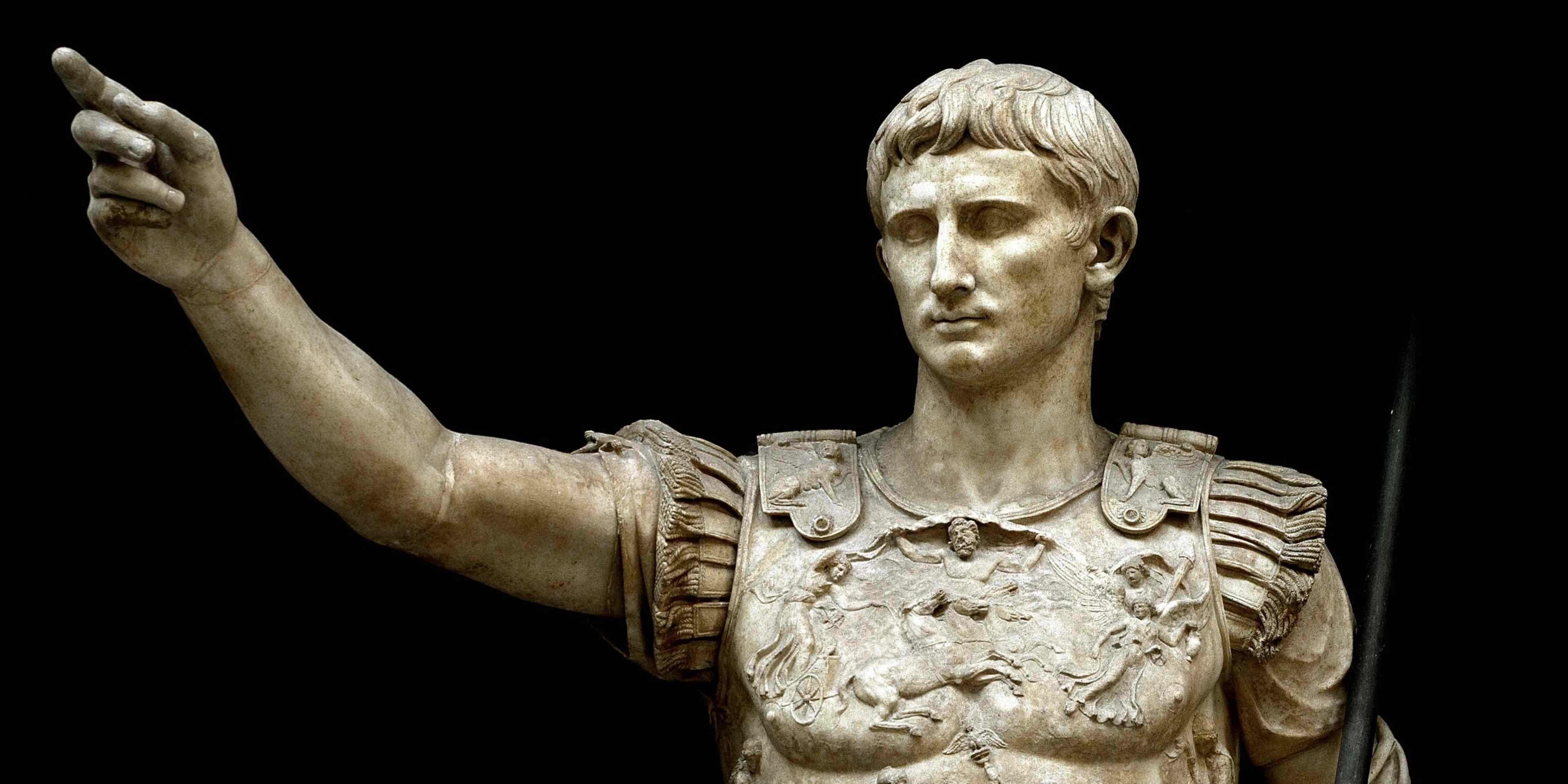Imagine a world in which political norms have broken down. Senators use bad faith arguments to block the government from getting anything done. An autocrat rigs elections and gives himself complete control over the government. Even stranger, many voters subscribe to the autocrat’s personality cult and agree that he should have absolute control.
Welcome to Rome in the first century B.C.E. The republic that had existed for over 400 years had finally hit a crisis it couldn’t overcome. Rome itself wouldn’t fall, but during this period it lost its republic forever.
The man who played the biggest role in disrupting Rome’s republic was Augustus Caesar, who made himself the first emperor of Rome in 27 B.C.E. By that point, the republic’s political norms had been breaking down for about a century, and Augustus was in a position to take advantage of that.
Before that century, “there had been a really long period where the republic functioned,” says Edward J. Watts, author of the new book Mortal Republic: How Rome Fell Into Tyranny. Political norms were heeded; and when the government ran into a new problem, it would amend itself to keep working. For over 300 years, the republic operated this way. There was no political violence, land theft or capital punishment because those went against the political norms Rome had established.
Then, in 133 B.C.E., Rome experienced its first political murder in the history of the republic. Senators were angry that Tiberius Gracchus, an elected official who had tried to redistribute land to the poor, was seeking a second term as tribune of the plebs. During a fight that broke out between Tiberius’s followers and opponents, senators beat him to death with wooden chairs and helped murder nearly 300 of his followers.
Political violence increased in the 80s B.C.E. when political factions started stealing people’s land and killing their enemies. In 44, senators murdered Augustus’ great-uncle Julius Caesar after he unconstitutionally named himself dictator for life.
Non-violent political dysfunction increased during this time, too. During the 60s B.C.E., a senator named Cato the Younger had constantly and unnecessarily used procedural delays to block the senate from voting on legislation he did not like for years. Other senators went along with this because they considered Cato a moral leader.
In 59 B.C.E., one of the consuls working with Cato even tried to shut down all public business for the entire year by declaring each day of the year a religious holiday. (In the Roman Republic, saying the gods were angry was an acceptable reason to declare a holiday and postpone voting.)
So why didn’t anyone step in to punish these politicians for their antics? “If you believe your republic will last forever, then doing things like not holding a vote on something essential for three years—you don’t see the problem in that, necessarily,” Watts suggests.
As Rome grew, it periodically amended its republic to keep it functioning. However, by the time of Cato the Younger, the republic had functioned so well for so long that a lot of people took its ability to survive for granted. And by the time Augustus took power, most people didn’t remember a time before political violence, land theft and government dysfunction were the norm.
Augustus realized that his subjects were traumatized by the status quo. His winning tactic was to “promise that the rule of law would return—and that no one would be executed for no reason and no one’s property would be stolen,” says Watts. “There were a lot of people who were willing to accept that in exchange for the right to have what we would see as political freedom.”
In other words, a lot of Romans were okay with Augustus assuming supreme control as long as he kept the peace—never mind that he had actually contributed to the violence and property thefts he now claimed only he could fix. Five years into his rule, Augustus bragged: “I freed all people from the fear and danger they experienced using my own funds.”
In addition to Augustus’ position as emperor, he also served as one of two consuls. The position of consul was technically the highest elected office in Rome, but under Augustus the elections weren’t free and he “won” every year. Free Roman men could still vote for other elected officials (as opposed to free women and slaves, who couldn’t vote), but there was a catch.
“No one really could run if [Augustus] didn’t approve of them,” Watts says. “So it wasn’t possible really to run as a candidate who opposed Augustus.”
Historians like Watts are still surprised—and unsettled—by the longevity of the Roman state following its massive governmental collapse. “It could have been and probably should have been much, much worse for the Romans than it actually was to lose their republic,” says Watts.











